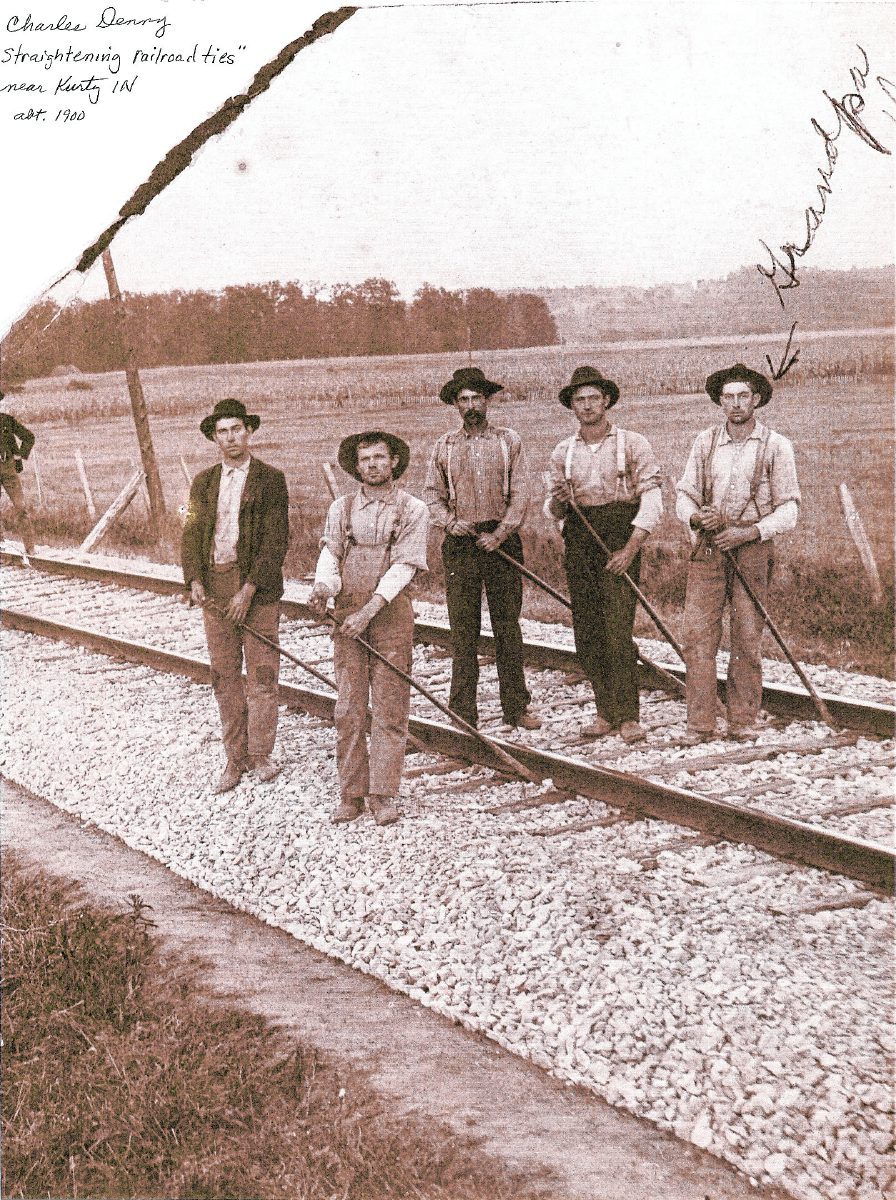
Specific migration patterns to the coalfields of Greene County in the early 20th Century permanently transformed the lives of Kurtz natives and their descendants.
In 1897, a group headed by James R. Walsh bought the foreclosed Evansville and Richmond Railroad and changed the name to the Southern Indiana Railroad.
The expansion of the railroad through the coalfields of Sullivan and Greene Counties to Terre Haute resulted in an explosion of urban settlement around some 200 coal mines in and around Greene County in 1900.
The county’s population grew to 36,000 at its peak. The city of Linton quadrupled from 3,000 people in 1900 to 12,000 in 10 short years. Sixteen coalmines within a three-mile radius of Linton employed 2,500 people, mostly men. And Jasonville and Midland grew once the railroad came through.
This bustling economy offered lucrative jobs for Jackson County workers. Kurtz residents began migrating to Greene County to seize opportunities, not only in coalmines, but also in transportation, construction, health care, housekeeping and other trades.
In April 1900, the Seymour Daily Republican reported that “several of our young men have gone to Linton to work on the S.I. railway extension.”
In May, “John Johnson and fencing crew went to Linton to build fences along the railroad” read The Brownstown Banner.
In August, T.A. Prather, James Matlock, William Prather, and others were working in Linton.
In March 1901, John Womack, Clayton Kerby, and Everett Browning were happy with their “profitable jobs” on the coal tipples.
In 1902, J.D. Womack worked as a coalminer and owned one share in the Victoria mine.
In 1903, Reat Ray lived in Linton, and “the boys” who worked on the steam shovel in Linton were laid off “on account of their boss being sick.”
In May 1900, “Mrs. Laura Lucas and children moved Jasonville to join her husband, who worked as section foreman.”
In 1902, Lute Browning lived there, as did Peter Wheeler and his family.
By 1903, Frank Lane was working in a Jasonville mine, and “Uncle” Sam Mahuron, Hearm Acton, Robert Sutton, and John Mohr and family had also moved there.
Mollie Smith caught malaria there. Her sister Ollie, also of Jasonville, and father brought her back to Kurtz in October. The same month Reuben Hanners sold his Kurtz property to C.E. Deal and moved to Jasonville.
In 1904, Grant Taylor, Scott Mack, and George (Snid) Brown were working in Jasonville while Miss Jessie Williams was living in Midland. Several Kurtz youth left for Jasonville to work for the summer.
By 1905, Lucy, Roy, and Earl Brown, Mrs. Peter Aynes, Mrs. William McMahan and son Scott, and former blacksmith James Kennedy, all lived Jasonville.
In April 1906, medical doctor Bruce Fleetwood left his successful practice to pursue “a splendid opening” in Jasonville.
Dale and Beck Thompson’s family of Houston illustrate how the coal rush permanently shaped the future of seven siblings. Two never left Jackson County.
Lizzie and husband James Cross settled in Jasonville in 1897, where he became a miner. Charlotte married Lorenzo Powell of Linton, where they raised a family.
Anna married coalminer George Truit in Greene County in 1911, where they made their home.
Hazel married railroad employee Guy Kelley of Bedford and moved to Midland in 1916.
The fifth sister, Emma, moved to Greene County, where she married coalminer Ed Coleman in 1906.
After a few years, they moved back to Kurtz to raise their family.
Craig Davis, who was born in Seymour and graduated from Brownstown Central, currently lives in Tegucigalpa, Honduras, and works for a U.S. government contractor on school-based violence prevention. He is the author of “The Middle East for Dummies” and is conducting research for a genealogy and social history book in Kurtz and Freetown. Send comments to awoods@aim
mediaindiana.com.
